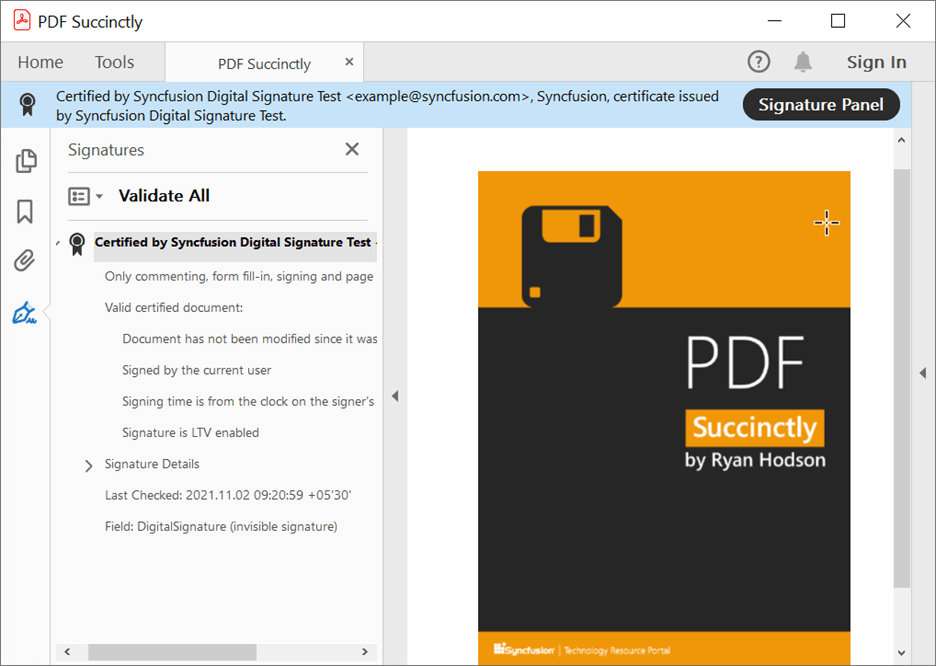Close Reading Notes. - ppt download
4.9 (364) · $ 19.99 · In stock
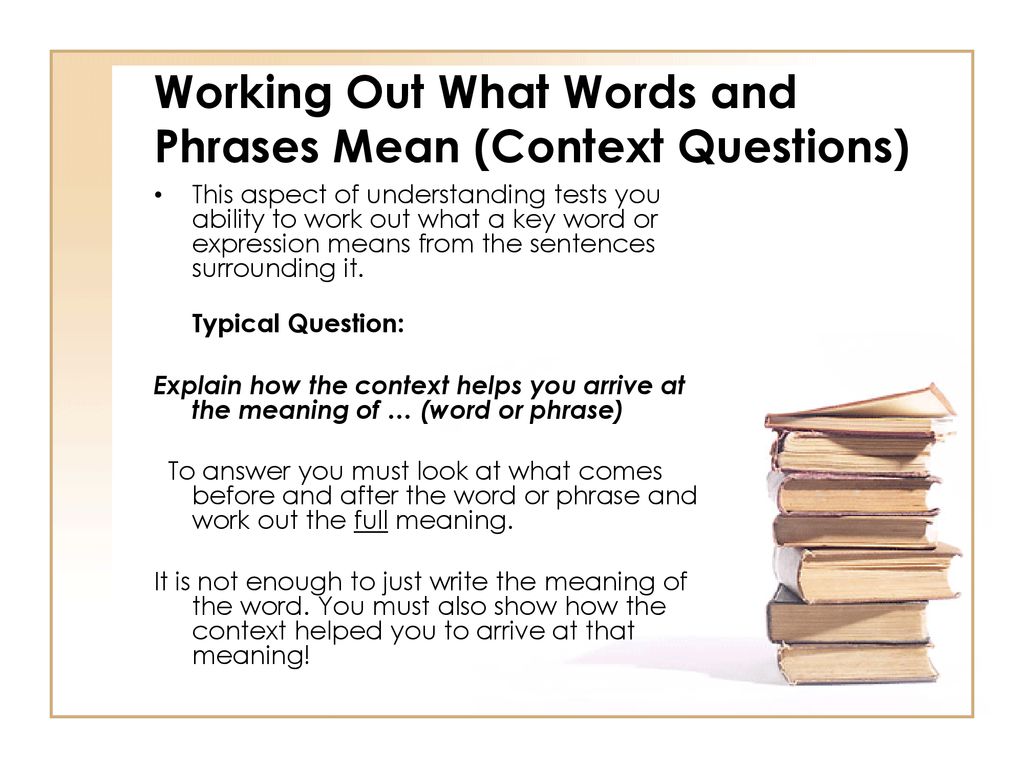
Understanding; Analysis; Evaluation. The Questions Questions fall into three categories Understanding; Analysis; Evaluation. Each question has U, A or E after it to help you work out the type of question.
Questions fall into three categories. Understanding; Analysis; Evaluation. Each question has U, A or E after it to help you work out the type of question.
This is the easiest type of question. It demonstrates you understand what the passage is about. Do not ‘lift’ whole phrases; Own words means exactly that. You should do this for all U questions even if it doesn’t specifically say so in the question.
This aspect of understanding tests you ability to work out what a key word or expression means from the sentences surrounding it. Typical Question: Explain how the context helps you arrive at the meaning of … (word or phrase) To answer you must look at what comes before and after the word or phrase and work out the full meaning. It is not enough to just write the meaning of the word. You must also show how the context helped you to arrive at that meaning!
To answer this type of question, you need to look at key words and phrases and their connotations. Do not just repeat the detail given. You must make a statement about the writer’s feelings and then go on to prove it.
To answer this type of question you should get into the habit of underlining any major points which directly refer to the passage. The title of the passage will, of course, give you an indication of what the passage will be about. You need to be able to separate the main points from the supporting detail.
This aspect of understanding tests your ability to identify key words, phrases or techniques which are used to indicate how points are linked, how an argument develops or how points relate to each other. Effective linkage allows the passage to flow smoothly from start to finish.
e.g. Furthermore, in addition, also, secondly, then etc. (ii) Words which show that the next point will challenge the last one: e.g. But, on the other hand, conversely etc. (iii) Words which remind a reader where they are in a piece of writing. e.g. Firstly, secondly, so, to sum up, in conclusion, finally etc.
(iv) Words which illustrate a point just made. e.g. For example, to illustrate this etc. (v) Paragraphs may also be linked by asking a question at the end of one paragraph and answering it in another. (vi) If a writer has referred to someone by name in a previous paragraph and then refers to them using a pronoun (he, she, they, we) then a link has been made. This is the same with objects (it etc.)
This aspect of understanding tests your ability to be able to distinguish between the important sentence(s) in a paragraph and those which extend an idea.
(i) Does the sentence make a clear statement (ii) Does it contain a new idea which is then developed (iii) Does it make a new point in the argument (iv) Is it a new development in the narrative (Answer yes Then it’s probably a topic sentence!)
(vi) Does it merely extend an idea already stated (vii) Does it seem to summarise the paragraph (Answer yes Then it probably isn’t a topic sentence!)
Punctuation. Repetition. Sentence length. Paragraphing. Order of material. Language Questions- Word choice. Imagery. Tone.
You will be asked to comment on the structure of a sentence. The question is not just asking you to explain what the writer means but is asking you to comment on how the sentence is put together. You will need to be able to recognise: (i) different types of sentences; (ii) how sentences can be separated or linked by different kinds of punctuation; (iii) how the parts of a sentence can be arranged according to patterns; (iv) how writer’s use different sentence structures.
A Question: Is John sitting down (Remember the rhetorical question) An Exclamation: John is sitting down! (Used to convey amazement, shock or emotion) A Command: Sit down, John. (Used in instructions and persuasive writing)
Usually you would divide sentences into clauses. There are three types: (i) Simple: John hit the ball into the garden. (ii) Compound: John hit the ball into the garden but Mary threw the bat through the window. (2 simple sentences linked in one sentence and given equal importance) (iii) Complex: Because he was tired, John hit the ball into the garden. (1 sentence consisting of two or more clauses linked together by conjunctions.) NB: One clause will make sense on its own – Principal. Clauses which don’t are called ‘sub-ordinate’
Sometimes the verb is omitted for dramatic effect. e.g. He looked in the rear-view mirror. Nothing coming. The underlined sentence is known as a minor sentence! Creates impact, suspense or urgency; Suggests informality; Used as abbreviations in notes and diaries.
Often to have an instant impact or to help a reader to understand better. This may take the form of a very short paragraph – often just one line on its own. It also throws emphasis on a particular idea. It can slow action and create suspense.
It is a useful guide as to how a sentence or phrase or word should be emphasised.
(e.g. The witches in ‘Macbeth’ said: ‘Fair is foul and foul is fair.’) Semi-colon ; comes between two statements that are closely connected, or which balance or contrast one another. Also separates a list of phrases. (e.g. The first present she opened was a book; the second a CD)
e.g. The judge announced the verdict – guilty. Two Dashes - - marks of an extra, non essential piece of information. (Parenthesis) e.g. That day – many years ago – will always be with me. Inverted Commas ‘ ’ enclosed quotes, direct speech or the title of something.
(i) Inversion Inversion is used to alter the emphasis of a sentence. In normal English, the normal order is for the subject to come first followed by the predicate (words which tell us more about the subject!) e.g. Flames (subject) leapt up and up predicate) CORRECT! Up and up (predicate) leapt the flames (subject) INVERSION!
CLIMAX leaves the most important statement to the end. ANTI-CLIMAX builds up the reader to expect something that does not happen. (iv) Antithesis. This is the counter-argument. It balances the argument.
· The complexity of the sentence (simple, compound etc); · It’s function (statement, question etc); · Punctuation; · Length of sentence; · Whether it is balanced or not; · Whether it is a rhetorical question; · Any repetition; · The order of words within the sentence.
The ‘usual’ terms you should know – but there are a whole host of other figures of speech that you should be aware of, especially if you come across an argumentative piece of close reading.
Repetition. Hyperbole. Ambiguity. Analogy. Anthropomorphism. Cliché. Imagery. Irony. Juxtaposition. Oxymoron. Paradox. Pun. Sarcasm. Satire. Stream of consciousness. Symbolism.
When answering a question on the use of figurative language (imagery) you must find the points of comparison and decide how this helped your understanding of what the writer was trying to say.
Litotes: The use of understatement. Euphemism: Ways of making an unwelcome truth seem less harsh. Circumlocution: To ‘talk round’ something rather than address it directly. Neologism: The use of ‘new’ words.. Archaism: The use of ‘old’ words.
Tone relates to the way in which something is said. It refers to a particular attitude or feeling conveyed by the author. In order to work out the tone you’ll need to look at the type of language. Formal: standard English, complex sentences, no contractions, correct grammar. Informal: colloquial, slang, dialect, simple sentences, contractions, incorrect grammar.
Humorous: Author will amuse you. Flippant: A light-hearted look at something serious. Conversational: Chatty and friendly language. Effusive: Enthusiastic towards the subject. Ironic: Where the opposite of what is stated is meant.
Tongue in cheek: Form of irony. The writer will sound serious but will ridicule the subject as a result. Satire: Irony – the writer is funny in a savage or nasty way. Serious: Solemn occasions.. Formal, ponderous or pompous could also be used. Sarcastic: A form of satire.
You have to make a judgement and back this up with reference to the text (that means quotations!). You may well be asked to assess the effectiveness of the writer’s stance on the issue he/she is writing about.
Educate the reader… Success Issue is presented clearly. Good, factual evidence. You learn something. Presented in a thought-provoking way. You want to know more.
Success All sides are fully explored. Writer’s point of view is convincing. Writer’s opinion is strong and clear. There is evidence of research. Conclusions are reasonable and sensible.
Success You are personally involved. You have an emotional response. You react the way the reader intended.
Success Writer presents a watertight case. Is argued sincerely and convincingly. Evidence is used. Challenges common perceptions. Subject is dealt with objectively.
Subject, language, your reaction or the tone. Ask yourself, ‘What makes it effective ’ Quality of research, sincerity, strength of feeling, the way the writer engaged you, the fact it’s easily understood or that it achieves its purpose.
Writer’s Stance This is the writer’s opinion on a subject and it is usually fairly obvious due to language and tone.
With evaluation questions (particularly end questions), you may refer to parts of the passage you have already used for other answers, but avoid full repetition—too much recycling gains no marks!
Total Pages: 40 and 50 slides, File Size: 20 MB, PREVIEW
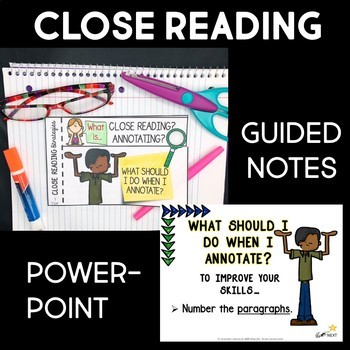
Close Reading & Annotation PowerPoint, Guided Notes, & Visuals

Unfold the Story: Free Book Review Scrapbook Template for Google Slides & PowerPoint. Book lovers, unleash your inner reviewer! Ditch the…
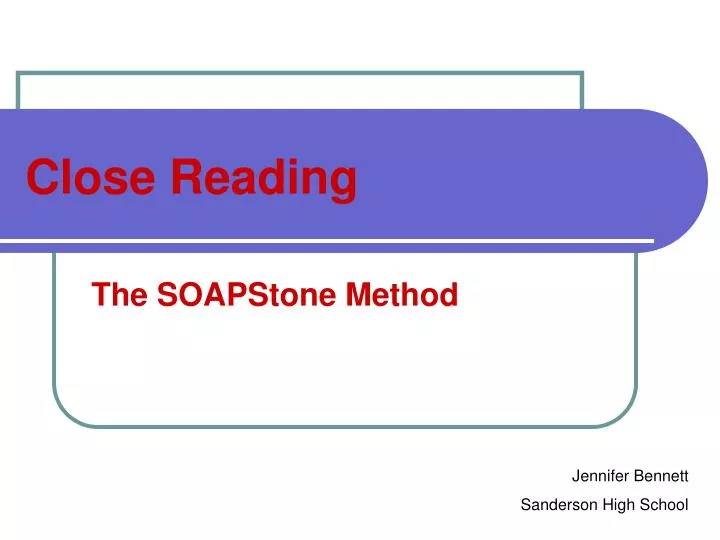
PPT - Close Reading PowerPoint Presentation, free download - ID
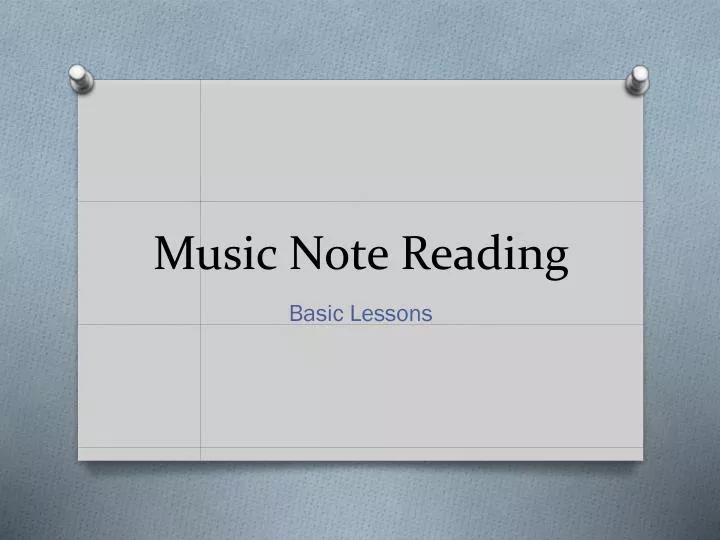
PPT - Music Note Reading PowerPoint Presentation, free download - ID:2188149

212 The Extra Degree PowerPoint Download TT712

MS PowerPoint Cheat Sheet.pdf - tblattman

Old Book With Music Notes PowerPoint Template, Backgrounds & Google Slides - ID 0000012280

Close Reading Notes. - ppt download

Participation Marketing Internal Manual Reading Notes PowerPoint

Book Review Google Slides theme and PowerPoint template

PPT - Close Reading PowerPoint Presentation, free download - ID

Reading Comprehension Workshop Book Powerpoint Template and Google
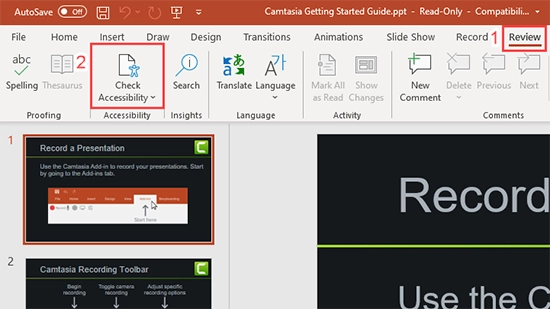
PowerPoint Accessibility, Accessibility
